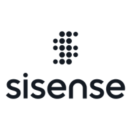Let’s be honest: Leaving a negative review can be satisfying. In the face of an unhelpful product or a bad customer experience, making a complaint — be it to the company themselves or on an external review site — can feel like avenging some deep wrong. Sure, you waited hours for your meal at a local restaurant, but now your scathing criticisms are etched into the tablets of Yelp for all to see, so who’s really the loser here?
More satisfying than that, though, is having your concerns seriously addressed — when instead of ignoring or dismissing your experience, a company takes the time to understand and find a solution to your problems. People pay attention to those responses: According to a survey undertaken by SEO insight company Brightlocal, 89 percent of customers are likely to use a service that responds to all customer reviews, whether they’re positive or negative.
For a SaaS company, correctly responding to low customer satisfaction is crucial. A low CSAT score means that your service has not helped the client achieve the outcomes they desired, which would make them less likely to use your service in the future. With the right response, though, that problem can be turned into an opportunity to improve your product and your relationship with the customer in one fell swoop.
“When a customer shares feedback, it’s a huge opportunity for us to improve and should not be taken for granted,” said Madeline Logue, head of customer success in North America East for Smartly.io. As a social advertising platform, Smartly.io’s leaders have plenty of experience with measuring customer response and adapting accordingly.
Built In NYC sat down with Logue, along with customer success leaders from Inato, Sisense, Dashlane and Peak to learn about how they handle poor customer satisfaction scores. The key for each of these companies when these scores arise is to develop solutions tailored to the specific customer through honest and empathetic communication.

Inato is building a global clinical trial marketplace in the hopes of improving and accelerating medical research. With such an important goal, the company needs to take poor CSAT scores seriously to ensure that they can support their clients in their critical research.
Imagine you’ve just received a poor CSAT score from a customer. What’s your first action to improve their experience?
Despite any company’s best efforts to build the perfect product and service, poor CSAT scores are inevitable. Although disappointing, they provide a huge opportunity to learn about updates to improve your offering and services, which can uplift the customer experience going forward.
At Inato, our first action when receiving poor customer feedback is to have the account manager schedule a one-on-one meeting with the client to understand the drivers behind the low score. Our account managers are independent of the sales and delivery teams — they function as a customer advocate, building trusted relationships with their clients from day one. Doing so opens the door for clear, honest and direct feedback, which is invaluable to our delivery, product and leadership teams. It is critical that their primary goal is to understand the customer — not to “save the account,” and certainly not to sell to them.
How do you train customer success managers to handle situations where a customer may be less than satisfied?
Less-than-satisfied customer situations are difficult and can be very uncomfortable for new employees. Developing comfort and acumen to handle these situations takes time and experience. We recommend team members leverage their more senior colleagues to help guide them when preparing for the client meeting. In many cases, we ask the senior colleagues to lead the meeting so more novice team members can still participate and maintain important customer relationships.
We also invite employees to join internal preparation calls for other client situations to observe and ask questions. Afterwards, they debrief with their manager to help them understand the discussion and decisions made. Another more complex method is to conduct one-on-one simulations based on actual client situations.
Remember: The clients came to you to help them solve problems.”
Aside from a stellar product, what are the key pillars of a successful customer satisfaction strategy?
Only on rare occasions will a product perfectly meet the client’s needs without some changes by one or both parties. Customers typically need to adapt their processes — many of which are deeply ingrained — to get the full value out of your solution. Helping clients address their changes and adapting where you can is critical. As such, I consider four pillars critical to a successful customer strategy.
First, deliver a personalized experience. Understand the customer’s challenges, why they bought from you and what they need from you to be successful. Identify where either of you can adapt to achieve their goals.
Second, conduct regular engagement with clients. Don’t reach out only when you need them or as a means to react to feedback.
Third, listen to what is happening in their world. Ask yourself: are there adjustments we can make that can help this client right now? If yes, make them.
Finally, approach all meetings as an opportunity to collaborate and innovate. Remember: The clients came to you to help them solve problems. Showing that you are there to make them successful and will innovate to do so will take your relationship to the next level.

Smartly.io’s platform automates digital advertising by combining media buying, creative and data.
Imagine you’ve just received a poor CSAT score from a customer. What’s your first action to improve their experience?
When a customer shares feedback, it’s a huge opportunity for us to improve and should not be taken for granted. The first step upon receiving the score is getting on a call with the customer to fully understand the experience that motivated the poor score. Did they encounter a bug in the platform that disrupted their activities? Did they recently join their company and need hands-on training to more seamlessly navigate our platform? What else could we be doing better?
When a customer shares feedback, it’s a huge opportunity for us to improve and should not be taken for granted.”
Once we understand the context, an action plan should be presented to the customer with next steps and timelines to address the feedback and get them back on the path to success. After executing the action plan, it’s important to check in with the customer and ensure they have experienced improvements since their initial feedback.
How do you train customer success managers to handle situations where a customer may be less than satisfied?
We train our CSMs in a few key ways. First, new hires are paired up with a more tenured CSM to support them in their first several weeks. This “buddy” is there to answer any questions a new hire may have and invite them to shadow their customer calls to observe how they handle various scenarios.
Beyond new hire onboarding, as a team we have a practice of knowledge sharing and retro-ing customer cases. Team members will reflect on a specific scenario they experienced, detail how they handled it and the outcome for the customer, and reflect on what could have been improved. This is a great way of ensuring learning permeates across the team and exposing CSMs to more customer cases than exist solely in their book.
Lastly, in our team meetings we practice mock customer scenarios where team members will bounce ideas off of each other and gather feedback on how to handle various situations.
Aside from a stellar product, what are the key pillars of a successful customer satisfaction strategy?
Building a solid relationship with the customer that emanates trust and transparency is essential to moving past stumbling blocks.

Sisense’s AI-driven business intelligence software collects and analyzes all sorts of data. As such, Director of Customer Success for Strategic Accounts Kelly McGuire takes a data-focused approach to responding to CSAT scores, looking at historical data to figure out where things went wrong before connecting with the customer for solutions.
Imagine you’ve just received a poor CSAT score from a customer. What’s your first action to improve their experience?
Ideally, we would have identified any risks ahead of time and worked to resolve them to ensure nothing impacts a CSAT or NPS score. That being said, as a first step post poor CSAT score, I’d take a look at all historical documentation to assess the existing customer relationship and then identify any early warning signs that could have indicated we would receive a poor CSAT score. From there, I would proactively connect with the customer and facilitate a transparent discussion to build trust and define a plan to drive more successful outcomes moving forward. Lastly, I’d set parameters to measure desired outcomes to ensure we can drive improved results and, ultimately, improved CSAT scores in the future.
How do you train customer success managers to handle situations where a customer may be less than satisfied?
This comes down to always working to build trust with customers. Issues, difficult circumstances and challenges can always arise with a business-to-business customer relationship — but if the CSM has built trust, you are often in a much better position to navigate challenges and collaborate with the customer to work towards a more successful outcome. It’s also about defining a strategic vision for the partnership and ensuring the CSM has a pulse on the health of the customer, using variables that are mutually agreed-upon factors in defining and driving success.
If the CSM has built trust, you are often in a much better position to navigate challenges and collaborate with the customer.”
Aside from a stellar product, what are the key pillars of a successful customer satisfaction strategy?
Define customer goals and steps that need to be taken to meet and exceed those goals. Listen to listen, not just to respond, so you understand your customer and they feel heard. Keep things simple — communicate efficiently, clearly and promptly so the customer always understands where things are in their customer journey. Ensure the software, solution or service the customer invested in is being used, adopted and valued so their investments can be tied to return on investment. Lastly, build relationships — creating personal connections with your customers drives a “trusted advisor’” status and leads to better overall outcomes.
For KC Badala, senior customer success manager at password management platform Dashlane, the most important part of responding to a low CSAT score is building a trusting relationship with the customer — before any score comes in. That relationship will make finding a resolution easier for all parties.
Imagine you’ve just received a poor CSAT score from a customer. What’s your first action to improve their experience?
The first action is to identify the root cause of the customer’s pain points and develop a strategy on how to get the customer back on track to getting the most out of their investment in your product. Understanding the value the customer was expecting versus what they are experiencing that is leading to a low CSAT score is critical to addressing the problem and ensuring you can get the customer to a resolution. Building a solid relationship with the customer that emanates trust and transparency is essential to moving past stumbling blocks.
Building a solid relationship with the customer that emanates trust and transparency is essential to moving past stumbling blocks.”
How do you train customer success managers to handle situations where a customer may be less than satisfied?
The biggest thing we try to teach our CSMs at Dashlane is to establish a strong and trustworthy relationship and lead with empathy during every one of our customer interactions. To teach that, we have a few key steps:
First, listen — with empathy — to customer concerns and understand why and what has caused the customer to be in this position.
Next, present a plan of action of improvement to the customer. Work with the customer to ensure the problem is fixed and develop an action plan for how you can prevent this from happening in the future. Be sure to be transparent with your customer and ensure they are on the same page with you. Set up a meeting to discuss how things are going after the problem has been resolved.
Finally, debrief internally — raise these concerns or problems with your internal leaders. If it’s product related, escalate these concerns to the product leader involved to help improve a process.
Aside from a stellar product, what are the key pillars of a successful customer satisfaction strategy?
I think the biggest pillar to a successful customer relationship is to lead with empathy and really understand what their key business objectives and goals are in terms of getting the most out of the products and services you are providing from the start.
The CSM should have developed an understanding of how customers plan to leverage your product and should be able to act as the liaison between the company and the customer. It’s critical to have checkpoints with your customers to ensure they stay on a positive track. Life is all about relationships — no customer or industry is the same and being able to adapt to individual customer needs and use cases is critical to delivering customer value.

Peak is a decision intelligence platform with the goal of bringing AI-powered solutions to a wide variety of clients. For their mission of making AI tools accessible to be successful, they need to be responsive to customer feedback.
Imagine you’ve just received a poor CSAT score from a customer. What’s your first action to improve their experience?
Don’t panic and don’t jump to conclusions. This is a time to listen carefully and bring curiosity to the situation, not your own biases and desire to hit your metrics.
Your CSAT process should be set up in such a way that it encourages customers to add color, to elaborate on why they have given a certain score. If you don’t have any follow-up questions as part of your CSAT outreach, I’d strongly consider adding one in — it doesn’t have to require a lengthy response, but it’ll give you that much-needed context.
Be sure to speak to your customer about the poor score they’ve given, ideally in person or over the phone or a video call. Listen to their concerns, ask open questions to probe deeper where necessary and make sure they know their opinion is valued.
You also should not feel the need to respond right away in the moment when you’re still processing the customer’s feedback, but do respond in a timely manner. Share the actions you’ll be taking as a result of their feedback and be sure to follow through. Over time, a poor CSAT score can actually lead to a better relationship between you and your customer if handled correctly.
Over time, a poor CSAT score can actually lead to a better relationship between you and your customer if handled correctly.”
How do you train customer success managers to handle situations where a customer may be less than satisfied?
A good customer success manager needs to be able to stay cool under pressure and respond thoughtfully while managing expectations. Many of your businesses will have a team who is very adept at handling objections and are no stranger to negotiation — your sales team! You might like to have your CSMs listen to recordings of their prospecting sales colleagues’ calls to see how they handle objections and dissatisfaction among prospects, and how they think fast on their feet.
Don’t underestimate the importance of sharing learnings across your CS team. When your customer is less than satisfied, bring the problem to the CS hive mind and discuss potential responses — you’ll be surprised how many ideas you garner from the different viewpoints and experiences in the room.
Lastly, there is no substitute for experience: Empower your CSMs to own the conversation with their customer when they receive poor feedback, but stand ready to support them as they’re planning their approach, and give them the benefit of your experience as a helpful sounding board ahead of important conversations.
Aside from a stellar product, what are the key pillars of a successful customer satisfaction strategy?
Every touchpoint you have with your customers is an opportunity to foster a positive relationship with your stakeholders. At Peak, we talk about the customer success equation: customer success = CE x CO.
CE is customer experience, it’s the way you make your customer feel throughout their time working with you. Keeping your customer engaged, informed and empowered in every interaction with your business is key to providing an immense customer experience. This also means being the voice of the customer within your businesses, bringing the intimate knowledge you have of your customers to the marketing team, the product team, the sales team, etc.
CO is customer outcomes. It isn’t enough for your product to look good or be quick to set up, it’s all about what your customers can achieve through using your product. We place a huge emphasis on measuring the value our customers receive through working with Peak and communicating that to the customer at every opportunity. Equally, user adoption is the cornerstone of value release for customers, so we have to make sure we’re embedding our product into our customer teams.















